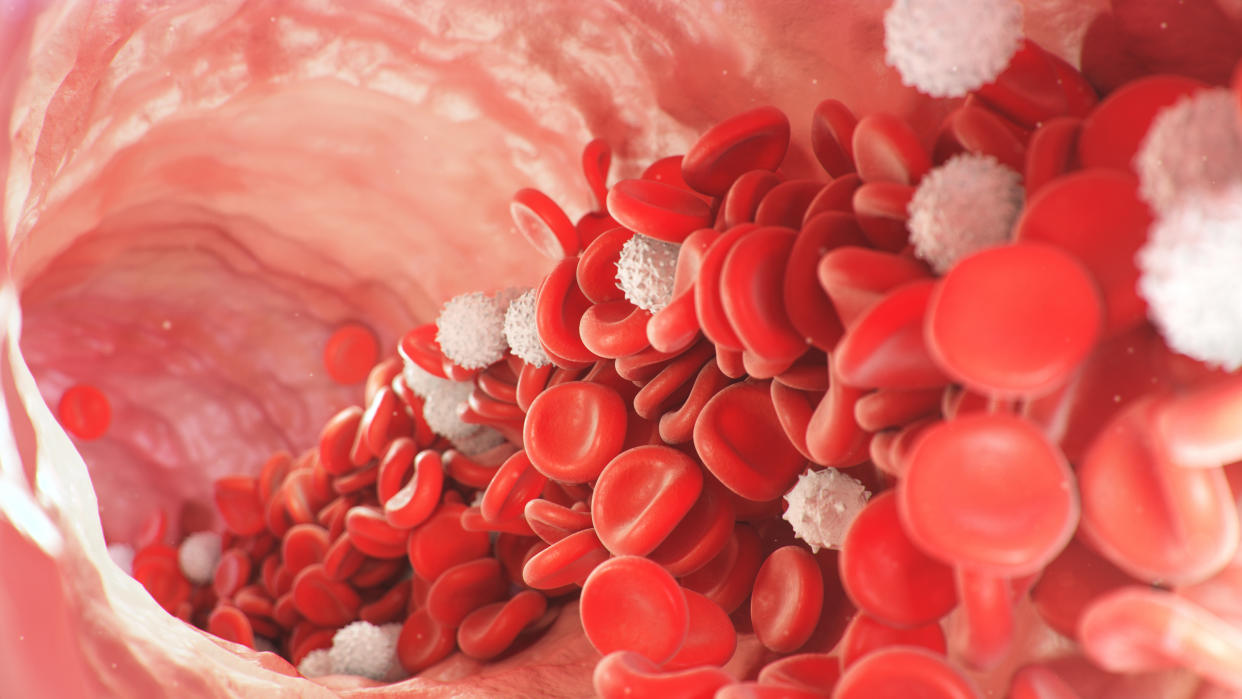Man, 85, develops blood clot in his arm with asymptomatic coronavirus

An 85-year-old man is the first known person to develop a deep-vein clot in his arm while infected with the coronavirus.
Although usually mild, the coronavirus can make blood stickier, raising a patient's risk of clots.
Deep vein thrombosis (DVT), when a clot forms in one of the deep veins in the body, has been reported in the legs of some severely-ill coronavirus patients.
The unnamed 85-year-old developed a swollen left arm in November 2020, having overcome an upper body DVT four years earlier.
After being treated at the Rutgers Robert Wood Johnson Medical School in New Jersey, a routine coronavirus test came back positive, with the man enduring none of the infection's tell-tale symptoms – a fever, new and continuous cough, and a loss of taste or smell.
Read more: 'COVID arm' mild side effect of Moderna vaccine
Rutgers medics have concluded the coronavirus was likely to blame, encouraging other doctors to consider the infection when treating DVT.
The man is not thought to have been vaccinated against the coronavirus. The University of Oxford-AstraZeneca jab is increasingly being linked to thrombocytopenia – a rare clot defined by a low number of clotting cells called platelets.
Research suggests the risk of developing a clot with the coronavirus itself is up to 10 times higher than enduring the complication post-vaccine.

Initially considered a respiratory infection, the coronavirus is now known to affect almost any part of the body, with some enduring palpitations, brain fog and diarrhoea.
A New York study has suggested nearly a third (31%) of people hospitalised with coronavirus complications develop DVT, which is often associated with long-haul flights.
Read more: Antibodies higher in over 80s when second Pfizer jab is delayed
Coronavirus aside, gravity and "decreased endothelial fibrinolytic activity" – which breaks down clots – in the legs mean just 4% to 10% of DVT cases occur in the arms.
Although rare, so-called upper extremity DVT (UEDVT) can be life-threatening.
The man had "long standing" high blood pressure, raised cholesterol levels, type 2 diabetes and narrowing of the arteries. Surviving a heart attack also left him with severe cardiomyopathy, when the vital organ's muscle is weak.
In November 2016, the then 81-year-old had his pacemaker "upgraded". Medics warned he would have "limited upper extremity movement for six weeks".
Six weeks after the operation, the man noticed he had "left upper extremity swelling from the top of his wrist to his shoulder" while playing tennis.
Doctors concluded the UEDVT was caused by "trauma" from the "pacemaker placement".
The man was successfully treated and discharged, experiencing no further swelling until November 2020.
Read more: 'Mix and match' coronavirus jab doses linked to more side effects
Amid the pandemic, the man saw a GP seven days after his left arm became swollen, without any pain or redness.
Ultrasonography – which measures the echoes of ultrasound pulses to produce an image of internal organs – revealed he had UEDVT in his left arm.
"While his oxygen levels were not diminished, he was hospitalised for the management of the upper extremity deep vein blood clot," said Dr Payal Parikh, from Rutgers.
"Often, blood clots are preceded by chronic inflammatory conditions exacerbated by immobility, and rarely do they occur in patients who are otherwise healthy and active at baseline."
Watch: Signs of clots in coronavirus patients
The man was treated via an infusion of the blood-thinner heparin, with doctors also bandaging and elevating his left arm.
He was discharged the following day, with a "lifelong" prescription of the blood-thinner apixaban.
A routine coronavirus test upon hospital admission only came back as positive after the man had been sent home.
"Aside from the UEDVT, the patient was asymptomatic for COVID-19 [the disease caused by the coronavirus]," the Rutgers medics wrote in the journal Viruses.
The man went on to endure post-thrombotic syndrome, generally defined as ongoing pain and swelling in the affected limb. Five months after being hospitalised, he still had "limited ability to flex at the elbow".
The Rutgers medics have stressed further research is required.
In the meantime, they added: "During these pandemic times, we recommend considering [coronavirus] infection as the etiology [cause] of venous thromboembolic events [clots in the veins] whether in the presence or absence of characteristic COVID-19 symptoms".
In around three in 10 (30%) DVT cases, "the blood clot can travel to the lung and be possibly fatal," said Dr Parikh.
"Other disabling complications include persistent swelling, pain and arm fatigue."
Dr Parikh added: "If you have been previously diagnosed with DVT or have chronic medical illness that predisposes you to blood clots, you have a higher risk for recurrence of a DVT in the setting of a COVID-19 infection and thus, should be vigilant."
Watch: Clots 'extremely rare' after Oxford-AstraZeneca coronavirus vaccine



